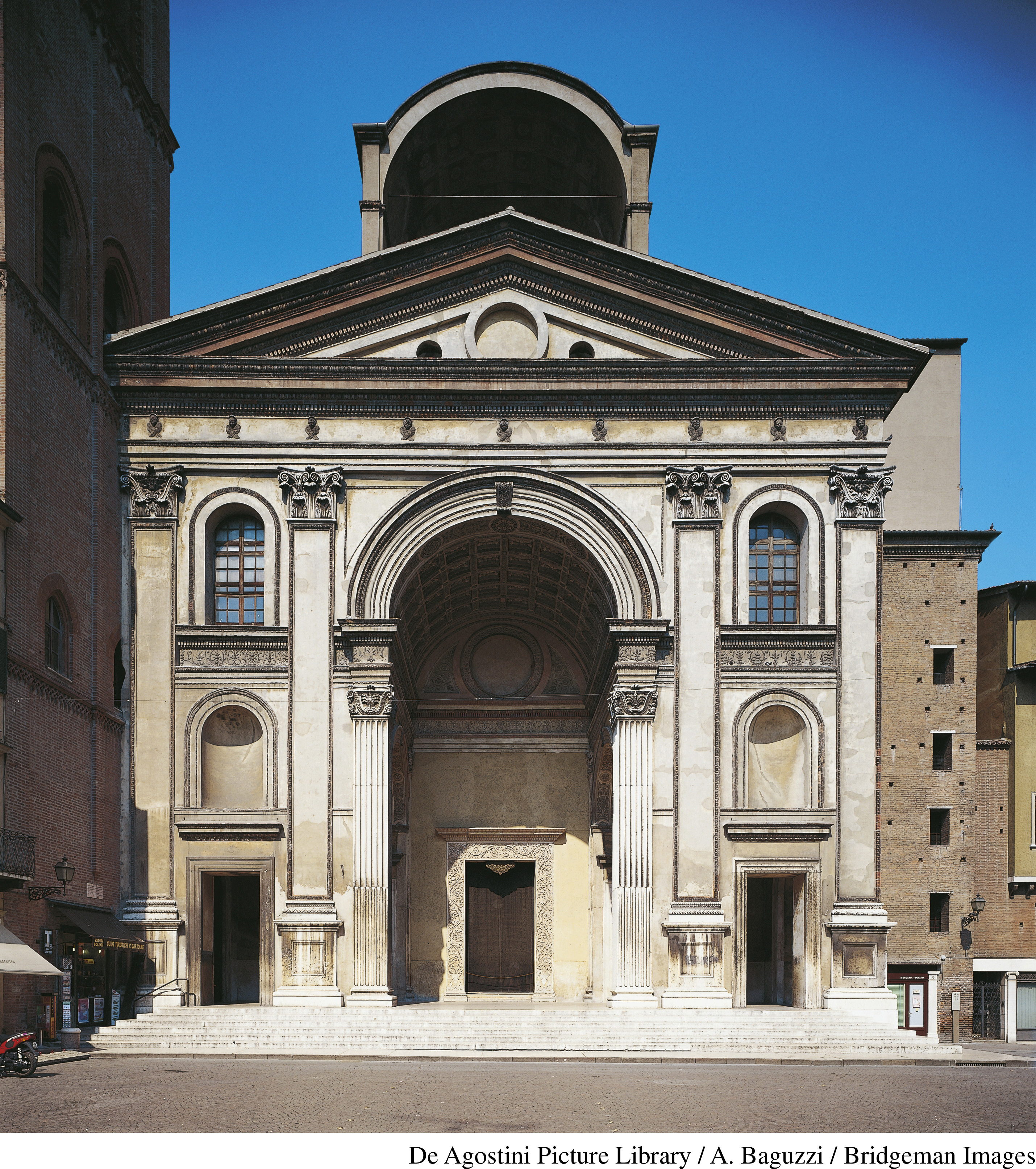Seeing History: Façades from Gothic to Renaissance
Printed Page 439
Important Events

During the Renaissance in Italy, the very faces of the churches changed dramatically. On the top is the Gothic façade of Orvieto cathedral, built in the fourteenth century. Three portals are topped by pointed frames, and the spaces between them are decorated with gold mosaics. Dedicated to the Assumption of Mary, mother of Christ, most of the mosaic scenes are about Mary. Near the top and at the center is a rose window, so characteristic of Gothic architecture. The four pinnacles rising from the lower piers make the entire structure seem to soar.
On the bottom is the Renaissance façade of the “temple” of Sant’Andrea in Mantua. It was begun in 1462 using a design created by Leon Battista Alberti (1472), an Italian humanist, artist, writer, and architect. Again there are three portals, but here they are framed by rounded arches. Four Corinthan pilasters (which look like pillars but in fact are decorative) provide the main focus of the façade. Alberti knew about them from ancient Roman architecture. Rather than soar, the temple has a squat appearance, reminiscent of a classical temple like the Parthenon.
Question to Consider
Why was the church of Sant’Andrea built like a classical temple?